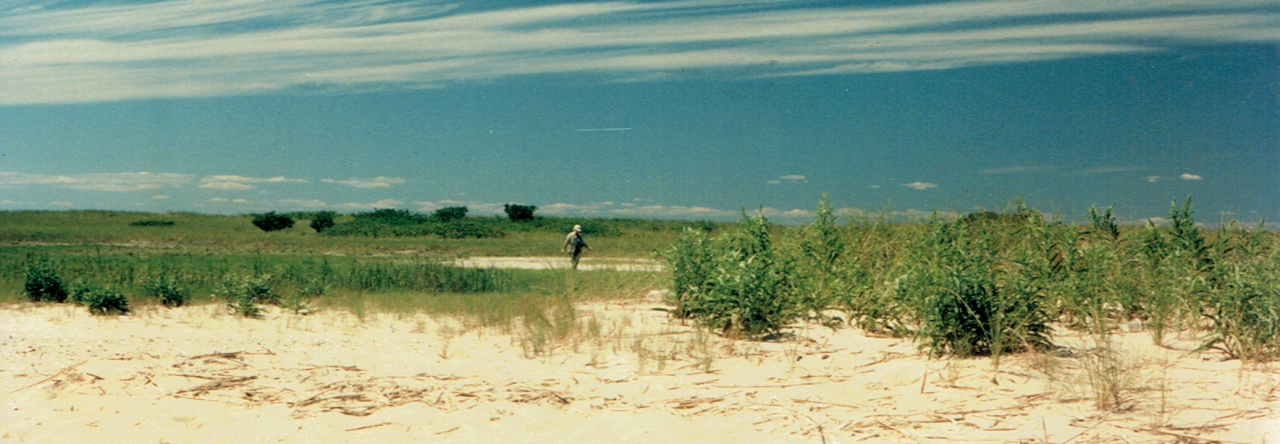Nancy and I enjoy visiting Babylon Overlook Beach for lunch in the car in the winter. If the wind and temperature aren’t too bad, we take large plastic bags and walk the beach looking for litter.
Today, the tide was dead low. We could see the flood tides’ aftermath with flotsam right up to the base of the dunes. We walk west and stoop and pick and stoop and pick until our bags are too heavy to continue. We are getting exercise, view great expansive scenery, and leave the beach cleaner. Every time we visit, there’s new litter attesting to the fact that our Atlantic Ocean is fouled continuously. We also do it because without fail, we find something interesting.
When we begin, the beach looks clean. They my eye spots a green dot – it’s a bottle cap and I pop it into my bag with is blowing up from the constant west wind. Things pick up after the first piece. While we pick up, we admire a beach empty of people, an ocean empty of boats, a sky empty of clouds. We don’t pick up wood. There are lots of slats from snow fences. I always find some really good word that I wish I could drag off and take home. For now, I have to leave them.
There are large barges of eel grass masses that have floated out Fire Island Inlet and come up on the beach. They are about 18 inches thick and as long as our living room back home. They catch sand lofted by the wind. Every small lump of eel grass created a small sand dune. They all face in the same direction. Their lee side has a gentle slope of fine sand that have me imagine that I am walking on the surface of a coarse iron file.
Old aluminum soda and beer cans pose a problem. The cans fill with sand and are too heavy to carry. I twist them a few times and they break apart. – Presto – empty and lighter. The beach is filled with area with lots of non-litter – surf clams, oyster shells, and moon snails. Water bottles are common. I found a long string of piping plover line from the nearby protection enclosure. It is very strong and could be put to good use. However, I don’t think that way. I fou8nd a corrugated box and examine it. I find printed on one side “Fireworks: Handle outdoors only, keep fire away.” I tear this off as an artifact. Moments later I find several empty cases. They chose this location to avoid detection. I’m thinking “Good idea” we pick up dozens of cases.
Where are the gulls? They probably fly back to the mainland. They know where the landfills are. The textures on the beach are splendid. The wind creates waves of quartz sand interspersed with garnet sand. These ripple marks are ocean waves on land.
We head back to the car and I show Nancy the delicate tracks of mourning doves and fox tracks. The fox walk in such a way that their feet land right in the tracks they make which form a straight line. How is this is an adaptation? Perhaps it’s because their tracks are less obvious. More thinking is necessary to nail down this idea.
We loaded our 30 pounds of trash in a garbage can and climbed back into the car for hot tea. We encountered a couple, man with a
metal detector and a lone man walking close to the shore. No traffic, parking lot empty, no sunburn, no sun block,, no beach blanket, no beach chairs, no beach towels, mo umbrella. We simply dressed warmly and picked up litter.
Being able to see hundreds of square miles of ocean, and a horizon that barely looked curved, we get a sense of place on planet Earth.
We’ve helped the ocean in our own little way. We’ve created a half-mile of litter free beach.
We’ll be back in a month to do it all over again.

Leave a Reply